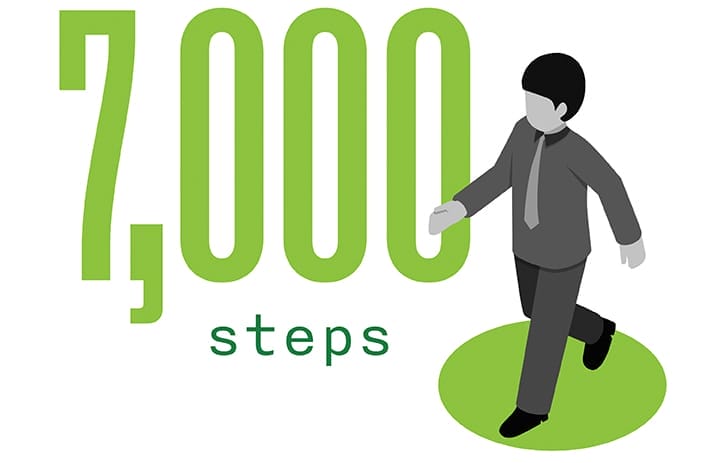Most U.S. employers have incentive programs designed to nudge workers toward healthier choices. But according to David Asch WG89, who teaches at both Wharton and Penn’s Perelman School of Medicine, most of those programs aren’t designed to deal properly with the human element. And perhaps it shouldn’t surprise us that given how irrational people are, systems based on the apparent logic of classical economics sometimes miss the mark in getting us to do the right thing.
But those problems can be fixed. Here are results from a recent study Asch did with colleagues Mitesh Patel WG09 and Kevin Volpp GRW98. (Asch’s recent paper on this topic: “Behavioral Economics Holds Potential to Deliver Better Results for Patients, Insurers, and Employers.”)

1. The Challenge: How to get employees to walk at least 7,000 steps a day. More than 80% of U.S. companies use some form of financial incentive to promote employee health. “They’ve got too rational a perspective,” Asch told Knowledge@Wharton.
2. Three Groups: The first group was just told how far they walked. The second group was paid $1.40 for each day they walked 7,000 steps. The third group was paid $42 a month, with $1.40 deducted for each day they failed to walk 7,000 steps.

3. Results: The first and second groups walked the same number of steps. The third group—who lost money when they failed to reach the 7,000-step goal—walked 50% more.
4. Conclusion: Framing a reward in terms of loss rather than gain can produce better behavior. Unlike traditional economics, behavioral economics acknowledges that people don’t always behave rationally.
Published as “Good for Your Health: Behavioral Economics” in the Fall 2016 issue of Wharton Magazine.
























